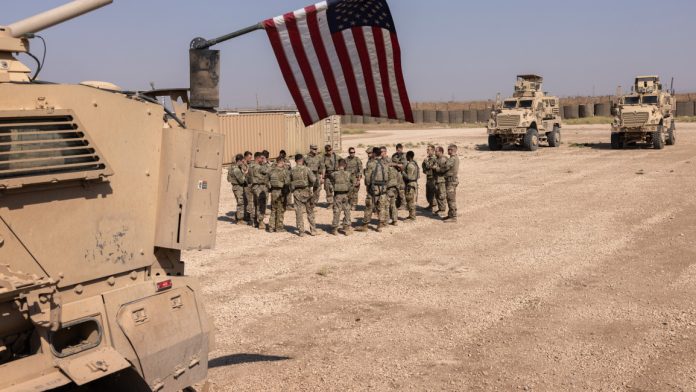Washington announced an agreement with Iraq to end the military mission in Iraq of the US-led coalition fighting the Islamic State group. Therefore, US troops will leave some of the bases they have long held during their twenty-year military presence in the country, Military Daily News reported.
Despite claims of US military personnel leaving the bases, the Biden administration refused to give details on how many of the estimated 2,500 US troops would remain there. The withdrawal also casts doubt on the future presence of the US in the country.
Over the years, Iraqi officials have occasionally pushed for the withdrawal of coalition forces, and formal talks to wind down the US presence in the country have been ongoing for months. Iraqi officials said some US troops may remain at the Hareer base after 2026 because the Kurdistan Regional Government would like them to stay.
US officials stated the agreement would lead to a two-phase transition of troops assigned to Iraq, which began this month. In the first phase, which runs until September 2025, the coalition mission against ISIS will end and forces will leave some long-standing bases. After the November elections, US forces will start leaving Ain al-Asad air base in western Iraq and Baghdad International Airport. In the second phase, the US will continue to operate in some form from Iraq until 2026 to support operations against ISIS in Syria.
The statement comes as the situation between Israel and Hezbollah continues to heat up and Tel Aviv’s military campaign in Gaza proceeds, threatening a wider regional war; and also after US bases have come under regular attack from Iranian-backed militias over the past few years, and those attacks intensified late last year and early this spring after the Israel-Hamas war began nearly a year ago.
The US military mission will shift to a bilateral security relationship, US officials said, but they did not elaborate on what that might mean for the number of US troops who will remain in Iraq in the future. The new agreement marks the third time in two decades in which the US has announced a formal handover of the military’s role in the region.
US military presence in Iraq
The US military invaded Iraq in March 2003, conducting what it called a massive “shock and awe” bombing campaign that lit up the skies, devastated large swathes of the country and paved the way for US ground troops to reach Baghdad. The incursion relied on what turned out to be false claims that Saddam Hussein had secretly hidden weapons of mass destruction, but such weapons never came to light.
The US presence grew to more than 170,000 troops at the peak of counterinsurgency operations in 2007. The administration of then-President Barack Obama negotiated a troop drawdown, and in December 2011 the last combat troops left the country, leaving only a small number of troops to staff the security assistance office and a detachment of Marines to secure the embassy grounds.
In 2014, the rise of ISIS and its rapid seizure of vast territory in Iraq and Syria forced US and partner country troops to return at the invitation of the Iraqi government to help rebuild and retrain police and military units that had disintegrated and fled. Subsequently, ISIS lost control of the territory it once claimed and coalition military operations ended in 2021, but a permanent US presence of about 2,500 troops remained in Iraq. Mainly among the objectives were to continue training and conducting joint counter-ISIS operations with the Iraqi military.
